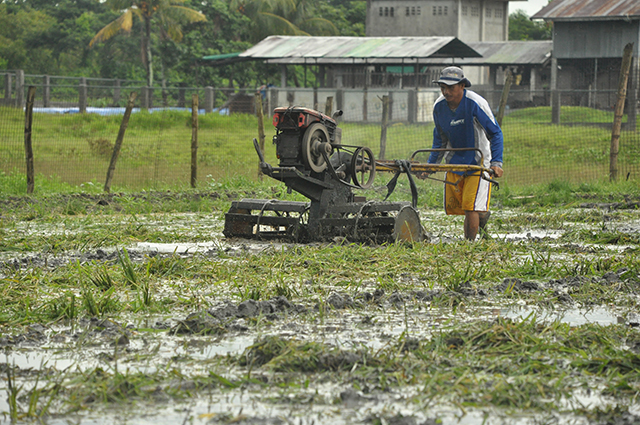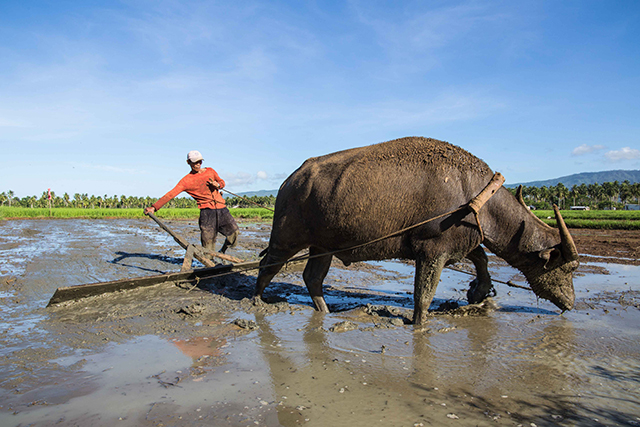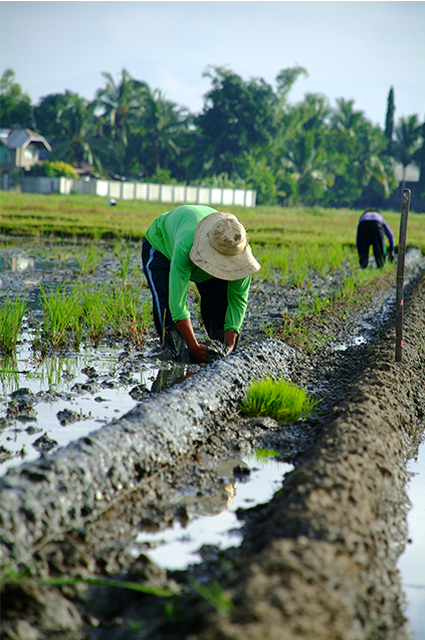A well-prepared land gives farmers a head start for the entire planting season. When it comes to tilling the soil, they must start with the basics.
Experts at the Philippines Rice Research Institute (PhilRice) say that proper land preparation provides a soil condition favorable for plant growth. It promotes good physical, chemical, and biological environment for better and efficient crop growth and development. It also facilitates good management of water, nutrients, weeds, and pests. Subsequently, all these benefits from a well-prepared land leads to a favorable yield.
While rice growing systems require different management practices, there are basic steps to follow to prepare the land for planting.
Plowing the cracks
 PhilRice experts say proper tilling helps recycle plant nutrients and allow decomposition. If organic materials are not fully decomposed, the soil tends to become acidic and some nutrients become less available.
PhilRice experts say proper tilling helps recycle plant nutrients and allow decomposition. If organic materials are not fully decomposed, the soil tends to become acidic and some nutrients become less available.
Through this method, water is retained better in the topsoil. Formed soil aggregates block and impede water flow in the cracks, and reduce the amount of water recharged in the groundwater.
Aside from the usual plowing and harrowing technique, shallow dry tillage or crack plowing is also recommended. This practice is usually done after harvesting or at the onset of the rainy season to give the soil enough moisture for cultivation. A farm tractor, hand tractor, or animal power may be used for the purpose.
It is recommended to prepare the field in 21 days. Plowing and harrowing are done once a week for three times before final levelling. A weeklong undisturbed field allows weeds and dropped seeds to germinate.
A harrower passes along the edges of the field in a clockwise pattern. The second passing requires a counter clockwise motion and finishes at the center. Depending on the clod size, another tillage operation can be done using primary tillage implements such as moldboard plow, disc plow, and rotavator or floating tiller.
Flattening the ground
 According to Apolinario Domingo of the College of Agriculture, Central Luzon State University (CLSU) in Nueva Ecija, proper levelling in the field solves more than 50% of the problems in rice production. A properly levelled field allows for more uniform water distribution, requires less water to fill up, reduces weed incidence, and enables better management of golden apple snails. It also helps achieve uniform crop maturity.
According to Apolinario Domingo of the College of Agriculture, Central Luzon State University (CLSU) in Nueva Ecija, proper levelling in the field solves more than 50% of the problems in rice production. A properly levelled field allows for more uniform water distribution, requires less water to fill up, reduces weed incidence, and enables better management of golden apple snails. It also helps achieve uniform crop maturity.
During land leveling, the field should have no visible mounds of soil above the water surface after the final leveling. To ensure a well-leveled land, it is recommended to have 3-5 cm water in the field using a metal or wooden plank.
Managing water
Water helps the rice plant use soil nutrients efficiently, aids in weed control, influences farm operations and farming systems, dissolves soil nutrients, regulates temperature, and facilitates field operations and soil biological processes. 
Uncontrolled water causes stress to the rice plant, and may affect its growth and yield.
To avoid this, dikes must be cleaned to remove grasses or weeds that harbor pests. Destroyed dikes must be repaired through compacting and putting muds to avoid the loss of water through seepage. In flat areas, dikes must be 15 cm x 20 cm to prevent rat burrowing.
Properly maintained ditches will also ensure even water distribution and drainage. Draining removes toxic substances, allows organic matter to decompose, and helps the plant produce deeper and stronger roots.
Preparing the land before planting is more than digging and overturning.
There are many factors to consider in rice production to increase yield. Knowing the crucial, first steps certainly helps.




